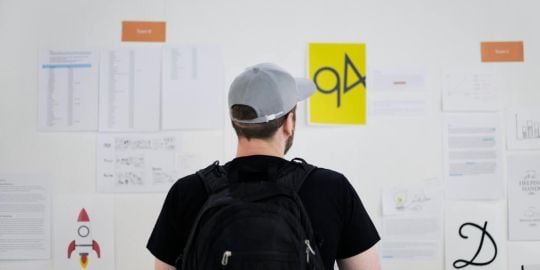Tea in Thailand: what it is, how to find it
I write a blog about tea so I'm often thinking about the subject, and writing about it. An upcoming trip to Japan and Korea has added a new dimension of how to find it in advance, how to prepare to seek out tea on a visit (although this would apply to expat living as well). I just visited Hanoi (Vietnam) in December and went through a similar experience, but tragically ran out of time to visit most of the shops I researched as a result of not being organized. To keep this article organized I'll say a little about what tea is in Thailand, then what it is in Asia in general (it's not so simple), then how to find it. I won't get into how to prepare tea (how to brew it), really a separate subject. I won't do justice to any of those topics due to keeping the article reasonable in length, but here goes.
Tea in Thailand
The main type of tea made in Thailand is oolong, specifically Jin Xuan varietal oolong from a cultivar produced in Taiwan, one of a numbered series (#12). That tea can be made into other types (green or black), and other plant types are grown, especially #17 Qinxin). Tea is produced in the North, outside of the small city of Chiang Rai, particularly in one growing area known as Doi Mae Salon. It is more popular to drink other types of tea than loose tea in Thailand. "Bubble tea" is probably the highest profile version, tea sold in stalls and shops with flavorings and large tapioca balls added.
Traditional Thai tea is sold in modern times as a reddish colored sweetened milk tea, typically produced from black tea powder, although earlier versions were likely produced from brewed teas. It's a bit outside the scope of this article but if someone has never tried any loose tea (only tea from tea bags) then all such tea products and the related range would not be familiar; "tea" wouldn't be what they know it to be. Tea in Asia: Tea originated in China (of course). It is not possible to summarize the range of types of tea in China in a short reference, much less cover the different growing areas. In general terms teas are identified by degree of oxidation.
Black tea, the most familiar in the West, is "fully oxidized" tea, with different percentage levels cited as what "fully" indicates (not necessarily 100%).
Green tea is at the other end of the spectrum, least oxidized, and oolong spans the middle range. Oxidation really is related to contact with oxygen, and burning, and the yellowing of newspaper over time. It's not necessarily a good or bad thing since it changes the flavor of the tea in ways that are good or bad depending on preference. Of course this generalization isn't all there is to processing teas, and other types relate to levels of oxidation in addition to other factors. White tea, yellow tea, and pu'er--really hei cha, pu'er is a regional designation for a tea that is typically compressed--are the other main types.
Tea varies by region also, in China and elsewhere, related to processing and other factors. The climate and soil are one factor, or "terriore," in a way similar to wine production. There are a number of different plant types although all teas are produced from one family of plants, Camellia Sinensis. Chinese and most Asian teas come from one sub-type, variant Sinensis, while most Indian teas are produced from the other main sub-type, variant Assamica.
Other main producing regions can be identified by country, with more specific growing zones within each country. India, Japan, Sri Lanka, and Taiwan could be considered the other main producers of tea but tea is grown in many countries in Asia and elsewhere. How to find tea: This is not as easy as it might seem.
Some very general approaches might be to visit a Chinatown, buy it online, or look in standard places like an airport or grocery store, or health food store. All of these would work but finding the best teas and different types of teas available in any country is not so easy. Royal Project shops are an interesting special case; their teas are of reasonable price and quality, as it sounds a Royalty related agency fulfilling the purpose of bringing quality local Thai products to a broader market.
There are actually two shops that sell tea in the Chiang Mai airport, one a Royal Project shop and the second related to a set Chiang Rai growers, and the first type only in the main Bangkok airport. It's a bit of an over-generalization but grocery stores don't sell the best types of tea, and searching for tea in Bangkok's Chinatown is a reasonable starting point but results might be inconsistent. There are few shops that relate to a conventional Western style store that might be familiar to Europeans or Americans but these do exist.
Since this isn't a commercially related article I won't get into specific examples, but these are the best places to find unique tea offerings, sourced from Thailand or even from China. How could one search for such tea outlets in Thailand (or really any Asian country they visited)? In short, extensive online search of a number of different indirect sources. Language prevents an ordinary Google search from turning up all Thai-language oriented options but many could be identified that way (many vendors understand how online Marketing works).
Related to my recent search in Hanoi and what I review now in Seoul tea shops might normally be located in limited traditional areas in many cities, although they could be in other places as well, or venues like shopping malls. In Chinese cities there would be a number of types of outlets relating to different and overlapping product sales: in shopping malls or centers, in traditional market areas, or even in a "tea district" area. Chinatown is the closest variant of this in Bangkok; in Hanoi there is an "old quarter" but there are even more shops in the next "district / neighborhood" over, a local commercial area, for whatever reason.
Of course it would be possible to visit a growing area instead, but that relates to setting up a tea-theme vacation. I would do such a thing but most would not, including my wife. Really taking any of these steps would involve an unusual level of interest in tea, except maybe keeping an eye out at a local market or for shops in an airport.
One last point of advice: tea cafes and tea shops are generally two different things. One can order brewed tea and perhaps pastries at a tea cafe (a good thing), and sometimes loose tea or tea sold prepared as tea bags, but to see a full selection of regional teas one would need to seek out a tea shop instead.






